The Differences Between Conventional and Convection Ovens
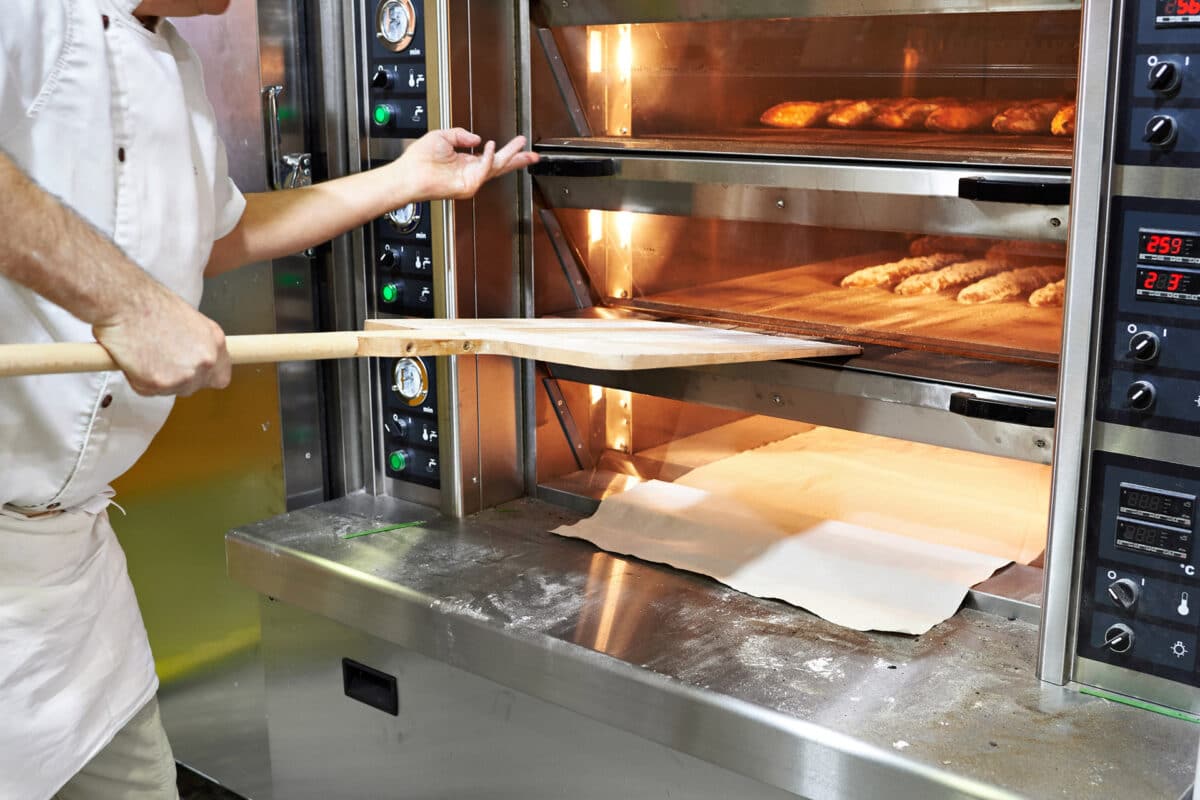
When the heat is on, you must have the right commercial kitchen equipment for your application. A conventional oven is a staple, but what about a convection oven? Do you need both?
Here, we break down the differences between conventional and convection ovens so you can choose the best (or both) for your kitchen. If you’re in the market for a new oven, here’s when to choose convection ovens and when to use the more conventional option.
The Main Ovent: Convection vs. Conventional Ovens
If you’ve made it anywhere in the culinary industry, you have some knowledge of a basic conventional oven (a.k.a., a “regular oven”). Even if you’re not a baker, a conventional oven is critical to any commercial (or home) kitchen.
But as we all know, the right equipment is everything in a professional kitchen. So, the debate between convection ovens and conventional ovens is important. A conventional oven relies on radiant heat from a stationary heat source for consistent, steady temperatures. A convection oven uses a fan to circulate hot air. You get shorter cooking times and even uniform cooking.
So, when do you choose a convection oven? Do most kitchens need both a conventional and a convection oven? What’s the difference?
Bigger Bang for Your Bake: What is a Convection Oven?
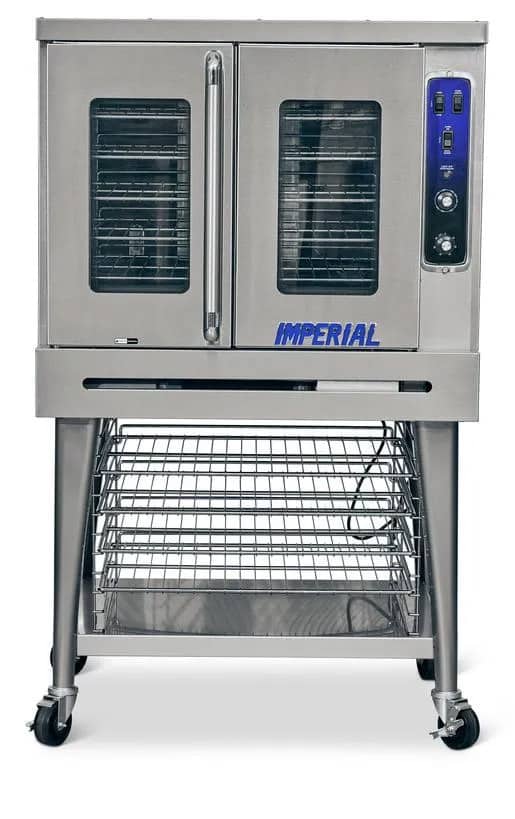
As mentioned above, a convection oven features a fan that circulates hot air throughout the cooking chamber. Conventional ovens use radiant heat from a stationary heating element, but with convection ovens, the heat is distributed around the food by a fan.
The even heat distribution offered by convection ovens is ideal for dishes that require uniform cooking—pastries, roasting meat, and cooking multiple batches of food simultaneously. The air prevents hot spots, so there are no worries about getting food on the top rack finished the same as food on the bottom. Because of this unique approach to heat distribution, convection ovens often reduce cooking times and improve the energy efficiency of your commercial kitchen.
Pros of Convection Ovens
- Even Cooking: Thanks to a fan that circulates the hot air, you get consistent temperatures throughout the unit for even cooking and browning.
- Faster Cooking Times: Convection ovens help you cut cooking times by 25-30% compared to their conventional counterparts. Speed is everything in the kitchen, and shorter cook times can help.
- Energy Efficiency: Convection ovens cook food faster and at lower temperatures than conventional ovens—this means a reduction in utility costs in the long run.
- Versatility: Convection ovens are a great choice for a variety of cooking tasks—baking, dehydrating, roasting, toasting, and more.
- Multi-Rack Cooking: Because convection ovens distribute heat so evenly, you can cook on multiple racks without rotating trays and turning dishes.
Cons of Convection Ovens
- Adjustment Needed: Recipes are often designed and tested around conventional ovens. When switching to convection, it might take some trial and error to get it right.
- Not Best for Delicate Dishes: Certain foods that need a gentle rise—souffles, for example—don’t fare as well in a convection oven. The circulating air can actually cause them to deflate.
- Learning Curve: Because a convection oven is a little more complex, it might take some time before your staff is used to the ins and outs of convection cooking.
- Higher Initial Cost: Generally, convection ovens are higher priced than the conventional option. However, like any quality piece of kitchen equipment, that investment pays for itself over time.
Keep an Oven Keel: When to Use a Convection Oven
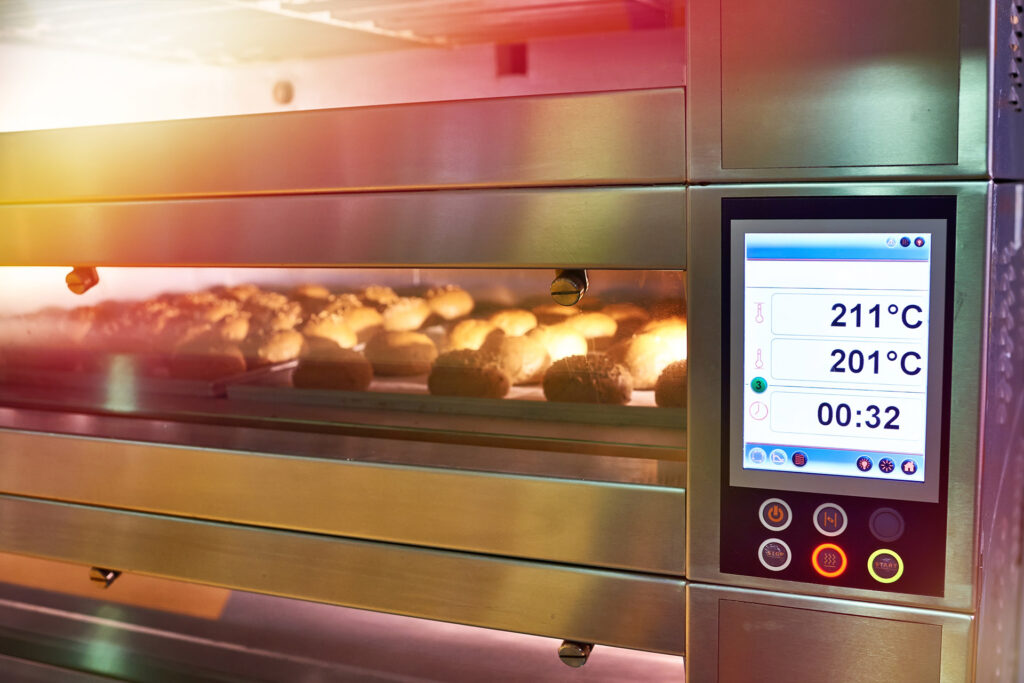
So, when is a convection oven the best choice? A convection oven can do many surprising things in a fraction of the time. Here are a few dishes that really benefit from convection cooking.
- Baking Pastries and Breads: Commercial bakeries LOVE convection cooking. Why? Because a convection oven is the secret to golden-brown crusts and even baking in large quantities. Create dozens of cookies, pastries, and breads in less time and with reliable results.
- Roasting Vegetables and Meats: Air circulation is particularly helpful for evenly roasting meats and vegetables. Because the cooking time is faster, you get that crispy exterior and juicy inside that everyone craves.
- Cooking in Large Quantities: If you’re rotating multiple dishes around in your oven, a convection oven saves time and effort. Because the heat is distributed throughout the oven by fans, there’s no need to rotate or worry about burnt batches that are raw in the middle.
- Dehydrating: A convection oven can pull double duty as a food dehydrator: dry herbs, fruits, and vegetables to add new and exciting garnishes and flavors to your dishes.
A Real Deal Baker: When to Avoid Convection Ovens
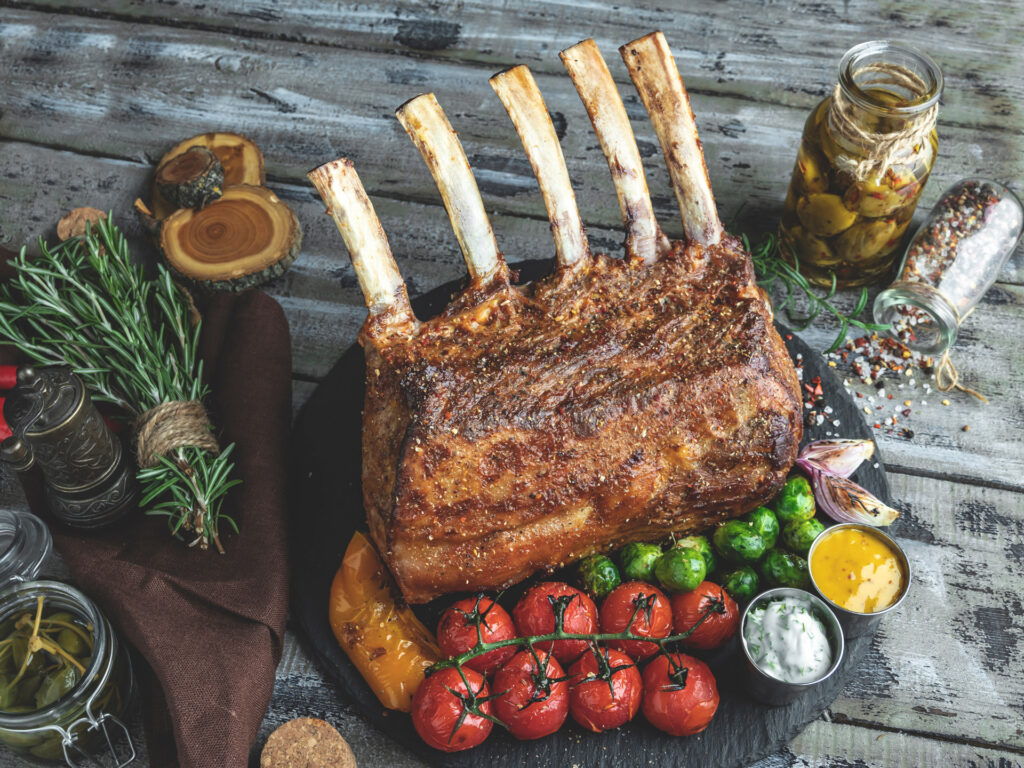
Just as there are times when a convection oven is the right answer, there are times when you might be better off with a conventional oven. Here’s when convection ovens don’t quite fit the bill.
- Delicate Pastries: Custards, meringues, and souffles are delicate and light. These fragile dishes crack and deflate in the circulating air.
- Large Bone-in Roasts: Circulation almost always produces great results, but you can get some inconsistencies when there’s a large bone in the center of a roast.
- Loose Toppings: If you’ve prepared a dish with a breadcrumb or crumble topping, the air of a convection oven might be too strong. Convection ovens can yield uneven topping distribution, especially for lightweight toppings.
Turn the Heat Around: Caring for a Convection Oven
Care and maintenance are the keys to longevity with any kitchen equipment. Ovens of any type especially need cleaning and upkeep for optimal cooking results. Here’s how to protect your convection oven from wear and tear.
Regular Cleaning:
- Interior: After each use, let the oven cool down and then wipe out the interior with a damp cloth. Making this part of your regular cleaning routine will help you stay ahead of any food splatters, spills, and grease, which can impair the performance of your oven. Pay especially close attention to the bottom of the oven cavity.
- Fan: Check the convection fan vents for grease build-up and debris. Use a soft brush to keep them free of any obstruction. Fans are crucial to convection cooking.
- Racks and Trays: Remove the racks and trays regularly and wash them thoroughly. Spills and splatters can cause the trays to get dirty—making the oven smokey and adding unwanted flavors to foods.
- Exterior: Wipe down the oven exterior and knobs, following the manufacturer’s instructions for cleaning. Most exteriors are stainless steel, so be sure to use a cleaning product safe for the finish.
Routine Checks:
- Door Seals: Look over the door seals of your convection oven to confirm they are intact without any signs of cracking or damage. Seals are crucial for preventing heat loss and uneven cooking results.
- Thermostat: As with any commercial oven, it’s a good idea to regularly check the consistency and accuracy of the temperature using a separate oven thermometer. Track any inconsistencies, as they can be an early sign of issues.
- Electrical Components: Regularly look over the power cord and plug to make sure there are no signs of damage. The plug should fit securely in the socket, and there shouldn’t be any wires or fraying visible on the cord.
Professional Servicing:
- Annual Inspection: It’s a good idea to schedule a formal visit from an oven technician once a year or so. A kitchen equipment professional can look over the convection oven, clean internal components, and help you stay ahead of any concerns.
- Fan and Motor: The fan and motor are two of the most important parts of a convection oven. These components should be examined during the annual inspection and cleaned regularly to ensure they’re working optimally.
Convection Oven Tips:
Regular care and maintenance are crucial for the performance of your convection oven. There are also a few tips that can help you get the best results every time you cook.
- Avoid Overloading the Oven: Don’t put too much in the oven during the cooking process. While convection ovens can handle large quantities and multiple trays, you don’t want to obstruct airflow, or items will come out uneven.
- Always Preheat: Although it’s tempting to put food in right away, take the time to preheat. You’ll end up with consistent results when you preheat.
- Choose the Right Cookware: Oversized pans can block the fans (and that all-important air circulation). Be sure to use the right sized and weighted cookware for the job.
A convection oven is an excellent option for commercial kitchens. You’ll get even, fast, efficient results. Care for a convection oven is similar to a conventional oven, but it’s important to be aware of the importance of the fan and air circulation when using convection.
For Old Time’s Bake: What is a Conventional Oven?
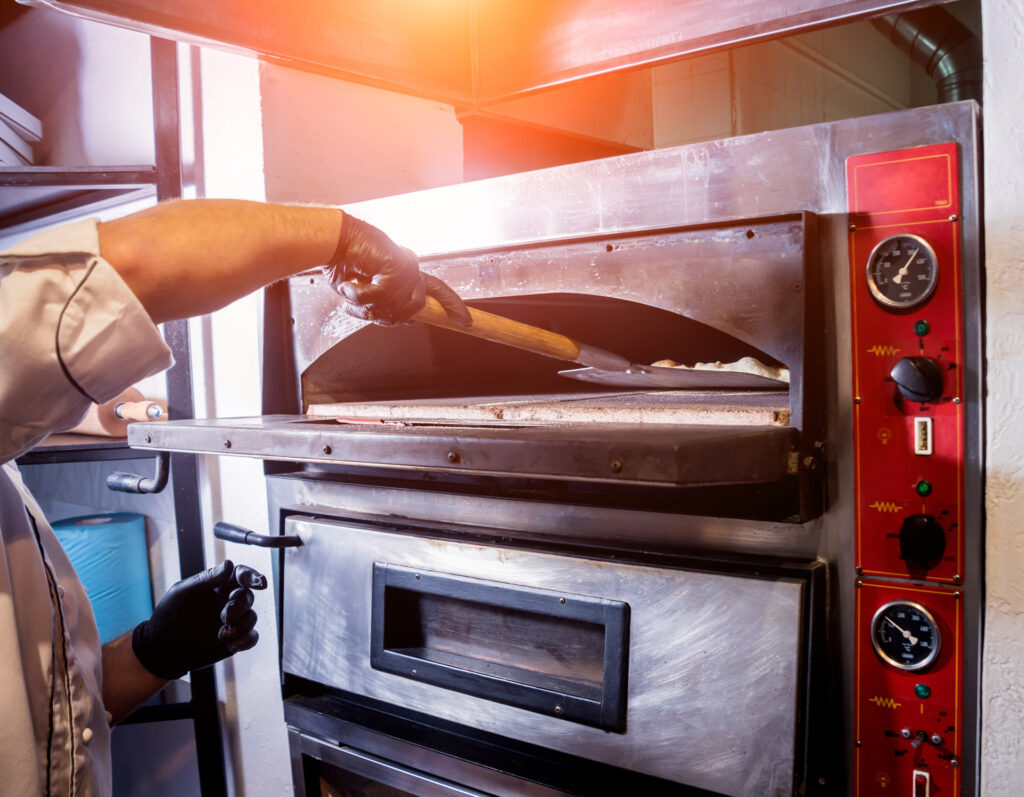
Most people in the kitchen are at least somewhat familiar with conventional or traditional ovens. A conventional oven has stationary heating elements at the top of the oven and bottom of the cooking chamber. The heat radiates from the elements and is absorbed by the food, cooking it. Electric ovens and gas ovens both feature heating elements, typically at the top and bottom.
The main difference between a convection and a standard oven is the fan. Conventional ovens don’t use fans to evenly distribute the air inside the cooking chamber.
If you’re looking for a slow, steady workhorse for the kitchen, a conventional oven is often the answer. A conventional oven is best for anything that requires a gentle rise or a crisp top. While cooking times may be longer with a traditional oven, the use is typically straightforward (and doesn’t require special recipes or adjustments).
Pros of Conventional Ovens
- Easy-to-Use: Conventional or traditional commercial ovens are quite user-friendly. The learning curve isn’t steep, and there are often no special requirements for new users.
- Good for Delicate Baking: Because conventional ovens have a steady, gentle heat, they work for those baked delicacies like souffles, cakes, custards, and slow-rise breads.
- Reliable for Traditional Recipes: Conventional ovens are consistent and predictable. In most cases, you don’t need to adjust anything on a recipe.
- Crisp Finishes: Because a conventional oven features a top heating element, you can get a crisp top on gratins and casseroles—any dish where a nice, brown crust is the goal.
Cons of Conventional Ovens
- Uneven Heat Distribution: The magic of convection ovens is all in the fan. Without air circulation, conventional ovens may have hot spots and areas where cooking isn’t even.
- Longer Cooking Times: Conventional ovens are slower than convection ovens. In a high-volume kitchen, the longer times can be a drawback.
- Less Energy Efficient: Longer cooking times and higher temps mean that conventional ovens tend to be less efficient than convection ovens.
- Lower Rack Capacity: Conventional ovens generally have a set number of racks they can hold. Overfilling a conventional oven will lead to inefficient and uneven results.
Cheaper by the Oven: When to Use a Conventional Oven

When should you rely on a conventional oven? Conventional ovens do a lot in the kitchen; while they might be a little slower than convection ovens, they’re very reliable and time-tested. Here are some examples of when conventional is best:
- Baking Delicate Items: Use a conventional oven for baking delicate items like cakes, soufflés, and custards, where a gentle, steady heat is necessary to ensure a proper rise without the risk of air circulation disrupting the structure.
- Brown and Crispy Toppings: Want that crave-worthy topping on your pasta bake or gratin? The direct heat from the top element of a conventional oven is the answer to get you there.
- Slow, Steady Cooking: Conventional ovens are great for jobs that need consistent temperatures. Get a higher temperature or lower temperature with a turn of the dial. Roasting large cuts of meat and baking bread are just two examples of where a conventional oven shines.
- Using Classic Recipes: Older, classic, and traditional recipes were typically designed around conventional ovens. If you’re following a tried-and-true recipe, a conventional oven will offer reliable results (without needing modification).
Other Ovenues to Take: When to Avoid a Conventional Oven
So, when is a conventional oven not your best bet? While conventional ovens have a large range of abilities, there are several times when a convection oven will give you even better results. Here are some:
- Cooking Multiple Trays: Convection ovens circulate the air, so you get consistent results across multiple trays. Conventional ovens, on the other hand, focus the heat in one area; if that’s blocked, you might get less-than-ideal outcomes.
- Need Speed: Time is always of the essence in a commercial kitchen, but a conventional oven is steady…and slow. Convection ovens nearly always give you faster results.
- Even Cooking for Large Dishes: That big roast or those multiple sheet pans will turn out even and uniform in a convection oven. In a conventional oven, you may need to rotate, move, cover a portion, or otherwise adjust the dish for a perfect end product.
Back on your Heat: Keeping Up a Conventional Oven
The care and upkeep of a conventional oven don’t stray too far from convection equipment. The biggest key is to be consistent—proper care and maintenance will keep this depended-on piece of equipment running at its best.
Regular Cleaning:
- Interior: Allow the oven to completely cool before you wipe down the inside with a mild (manufacturer’s recommended) oven cleaner. Most of the time, you’ll want to avoid abrasive cleaners as they can damage the oven surface. Clean all spills and grease splatters right away.
- Self-Clean: Like home ovens, some commercial ovens have a self-cleaning feature. Use the self-clean mode if you need to burn off grease and food residue (always read the instructions carefully).
- Racks and Trays: Remove the racks from your commercial oven and use warm, soapy water to clean them thoroughly. You may want to soak them if there are particularly stuck-on bits. It’s a good rule NOT to leave trays and racks in the oven during the self-cleaning cycle. The heat may damage them.
- Exterior: Similar to convection ovens, the outside of a conventional oven is usually made of stainless steel. Wipe it down regularly with a stainless steel cleaner, following any recommendations from the manufacturer.
Routine Checks:
- Inspect Door Seals: The door seals are a crucial component of any oven—they keep the hot air in and help maintain a consistent temperature. Give them a regular inspection to make sure there are no signs of wear.
- Test Temperatures: It’s important to check your oven’s temperature to make sure it’s working as expected. Use an oven thermometer to keep things consistent and steady.
- Check Heating Elements: In a conventional oven, heating elements are usually located on the top and bottom of the cooking unit. Look for signs of discoloration and damage. When you turn on the oven, those heating elements should glow nice and red.
Professional Servicing:
- Annual Maintenance: No matter the type of oven—conventional or convection—annual maintenance checks help you head off any changes or issues that arise with your oven. Add a professional maintenance check to your yearly routine.
- Gas Ovens: Gas ovens may also need lines and connections inspected each year. A gas leak can be extremely dangerous, so it’s important to have the lines checked by a professional.
Conventional Oven Tips:
Beyond the clean routine, you can do a few things to ensure your conventional oven is always performing its best. Here are some tips to keep your conventional oven operating well.
- Address Spills and Splatters: Avoidance goes a long way in preventing a major cleaning project—bypass spills and splatters by using foil and baking sheets to catch any drips and drizzles. Burnt on reside and heavy cleaning requires a lot of effort. Should you have a spill, don’t let it linger. Clean it as soon as the oven is cool enough to address.
- Preheat: Always preheat the oven. Food cooks more evenly, and results are as expected in a preheated oven.
- Clear the Ventilation: Ovens need consistent ventilation, so be sure you have plenty of leeway around the oven and the vents are unobstructed.
A conventional oven is a mainstay of the commercial kitchen. When your oven goes out, cooking grinds to a halt. Be sure that your oven is well-maintained and cared for so it can provide you with years of heat for all your yummy dishes.
Whether you need to boost your kitchen efficiency with a convection oven or you need the reliability of the conventional variety, Eleven36 has you covered with both types of ovens. We carry a vast selection of the top-quality brands in the business—brands like Waring, Vulcan, and American Range.
Choose from high-efficiency convection ovens to help your staff save time, or opt for the conventional oven for consistency and reliability. No matter what you need to cook up, our team is ready to help you find the ideal solution for your kitchen.If you have questions about any of our conventional or convection ovens, please reach out. We’re happy to help you find exactly the oven you need.
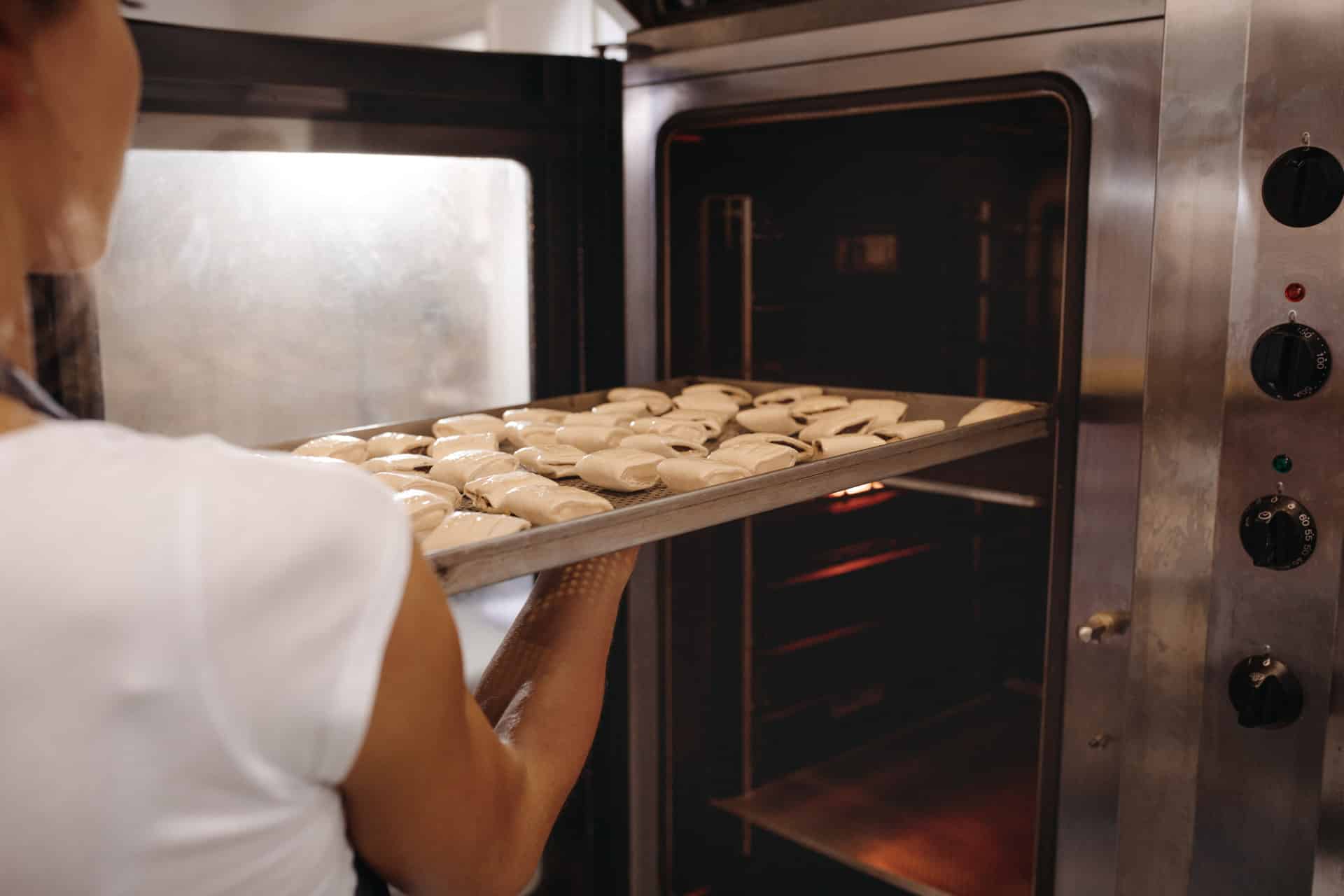
Get the Best of Both Worlds from the Ovengers at Eleven36
Whether you need to boost your kitchen efficiency with a convection oven or you need the reliability of the conventional variety, Eleven36 has you covered with both types of ovens. We carry a vast selection of the top-quality brands in the business—brands like Waring, Vulcan, and American Range.
Choose from high-efficiency convection ovens to help your staff save time, or opt for the conventional oven for consistency and reliability. No matter what you need to cook up, our team is ready to help you find the ideal solution for your kitchen.
If you have questions about any of our conventional or convection ovens, please reach out. We’re happy to help you find exactly the oven you need.
